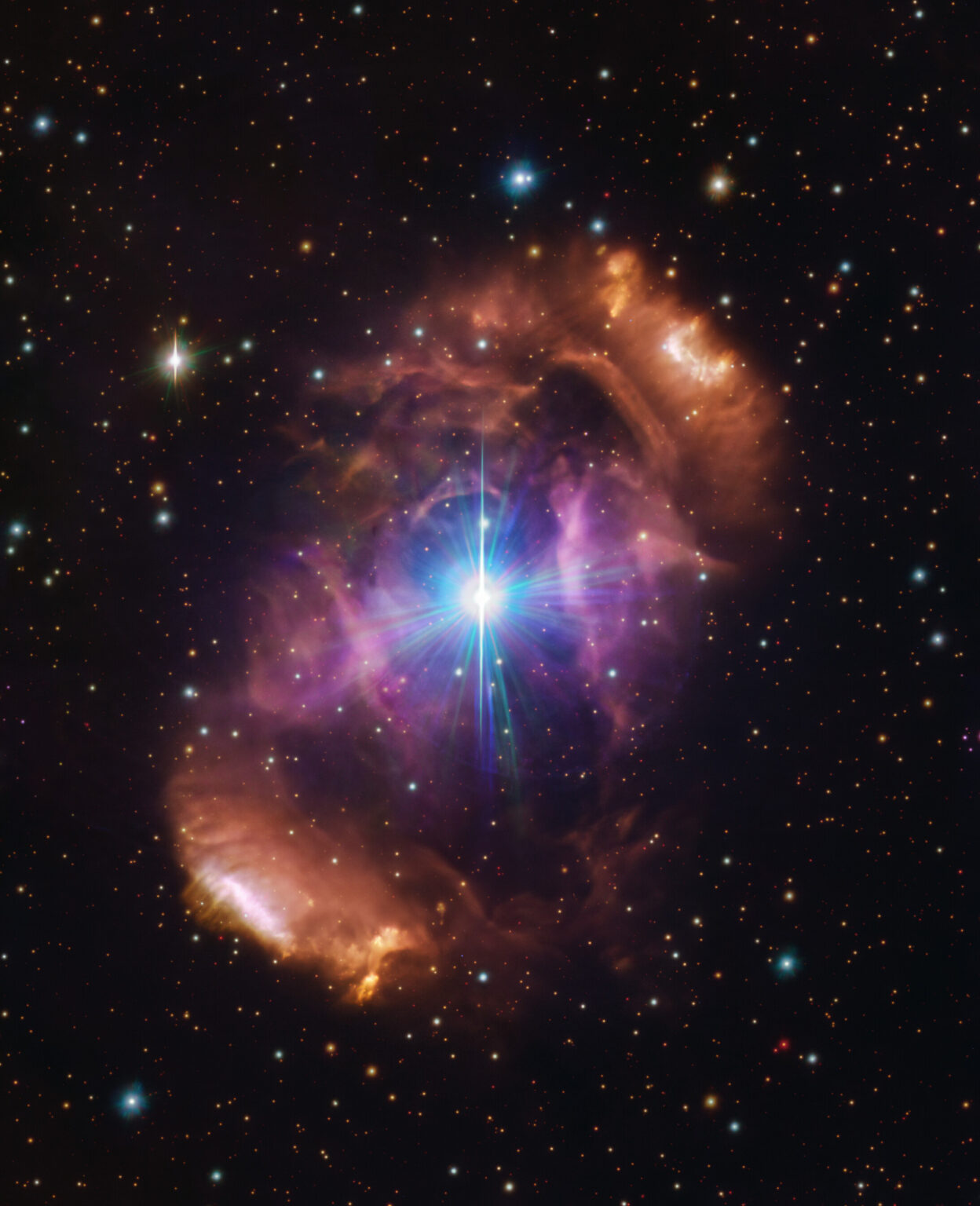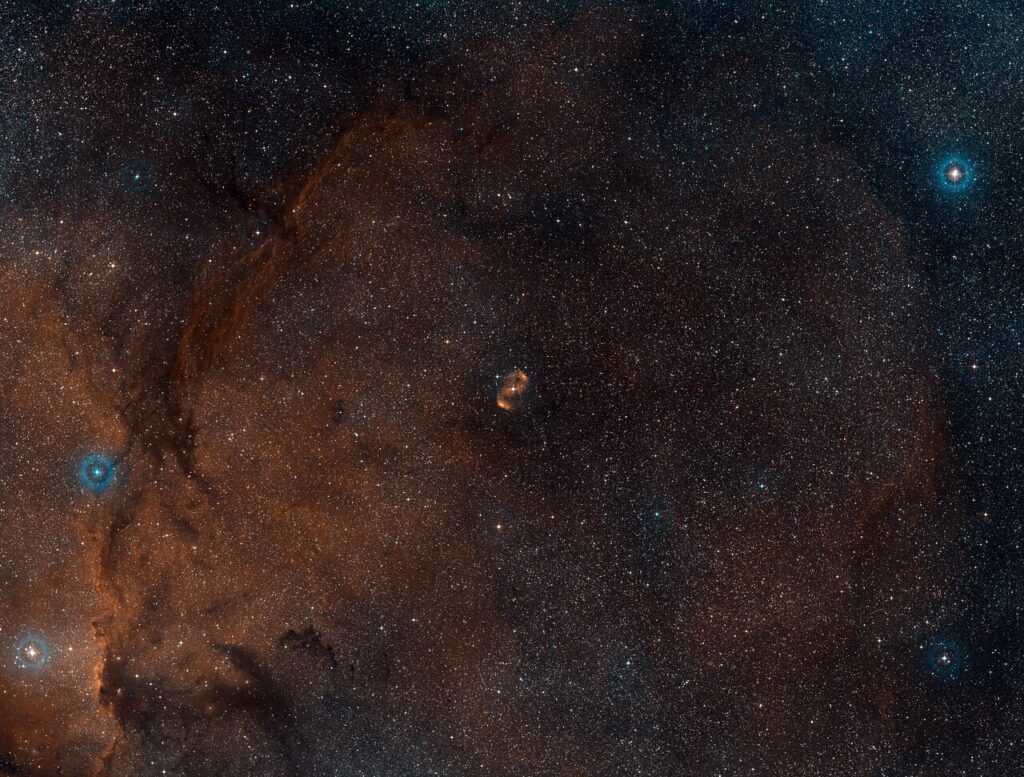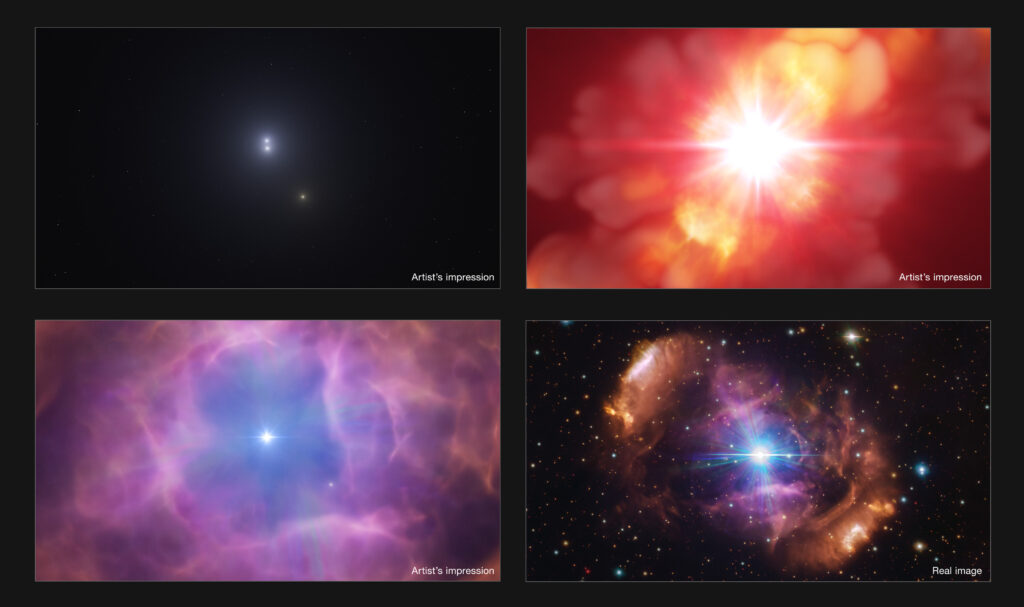Researchers from the European Southern Observatory have announced the discovery of the mystery of the star system HD 148937. In their opinion, it originally consisted of three stars, until two of them collided and merged.

HD 148937 is located at a distance of about 3,800 light-years from Earth towards the constellation Norma. It consists of two stars that are much more massive than the Sun, and is surrounded by a beautiful nebula. Such a combination is very rare, and astronomers have long suspected that HD 148937 holds some kind of secret.
Their suspicions were heightened when they analyzed the stars of the system. It turns out that the more massive star looks noticeably younger (by about 1.5 million years) than its companion and, unlike its neighbor, has a powerful magnetic field. It doesn’t make any sense, because they should have been formed at the same time. Moreover, the nebula surrounding the stars is only 7,500 years old, which is hundreds of times younger than both stars. Large amounts of nitrogen, carbon and oxygen were found in it. As a rule, such elements are located in the interior of the luminaries. And that means that some event has released them.

To solve this mystery, the researchers collected data from nine years of observations from the PIONIER and GRAVITY instruments mounted on the interferometer of the ESO’s Very Large Telescope. They also used archived data from the FEROS instrument installed at the La Silla Observatory.
During the subsequent analysis, astronomers came to the conclusion that initially there were at least three stars in this system. Two of them had to be located close to each other, while the third star was in a more distant orbit. Then the two inner stars merged. During this process, some of the material was ejected, which led to the formation of the nebula.

According to scientists, this scenario helps solve another long-standing mystery of astronomy: how massive stars get their magnetic fields. Magnetic fields are common for low-mass stars like our Sun, but more massive luminaries cannot support magnetic fields in the same way. However, some massive stars do have magnetic fields. Astronomers have long suspected that they might acquire them during the merger process. But it is only now that they have the first practical evidence of this.
Earlier we talked about what would happen to the planets of the Solar System after the death of the Sun.
According to https://www.eso.org
Follow us on Twitter to get the most interesting space news in time
https://twitter.com/ust_magazine


